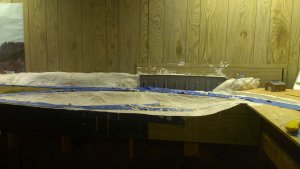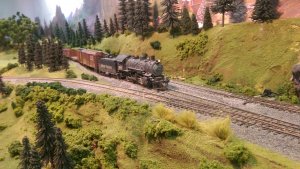Raincoat2
Well-Known Member
Okay - newbie question time, everyone - My HO layout is flat to this point, and I am at a place where I want to elevate the mainline to simulate going up a hillside, rolling along there for a while, then descending. I have the WS 2% incline/decline sets which raises the track about 4". Here's my question: what do you cover over those incline pieces with - because if you leave them as they are it looks really fakey, even if you spray paint them. Do you use SculptaMold to fill in those accordion gaps? Right now I'm thinking about tracing those 2% incline pieces on 2" thick pink insulation board (the kind you get at DIY stores), and make solid inclines out of them. That way I can add grass, bushes, trees, rocks, etc. alongside the track. Just want to know what you guys and gals do, what works and what doesn't. Thanks.



